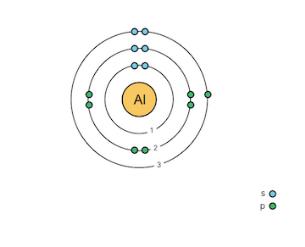
Exploring the Implications of the Newly Discovered Aluminium-20 Isotope
The recent discovery of aluminium-20, an exotic atomic nucleus, has generated significant interest across the scientific community, sparking discussions on its potential implications for nuclear physics and related fields. This breakthrough was achieved by an international team of researchers from China and Germany, as reported in Science Daily. The aluminium-20 isotope decays through a rare triple-proton emission sequence, providing unique insights into nuclear behavior beyond previously understood stability limits.
Understanding Aluminium-20: A Revolution in Nuclear Physics
The discovery of aluminium-20 challenges conventional models of nuclear theory, providing a new window into the forces that govern subatomic particles. Typically, the stability of an atomic nucleus is determined by the interplay between its protons and neutrons. The peculiar behavior of aluminium-20, emitting three protons simultaneously, suggests underlying quantum phenomena that defy existing stability frameworks. As detailed in Phys.org, the implications of this finding are profound, prompting physicists to reevaluate their theories concerning the balance of forces within atomic nuclei.
This discovery not only expands the known nuclear chart but also provides a template for understanding the delicate dance of symmetries and asymmetries that contribute to nuclear stability. The phenomenon observed in aluminium-20 could bridge gaps in our knowledge about superheavy elements, potentially aiding in the synthesis of new materials with unprecedented properties.
Potential Applications and Future Prospects
While the immediate applications of aluminium-20 remain within the realm of theoretical and experimental physics, the potential long-term impacts are substantial. The ability to create and study such exotic isotopes may lead to the development of innovative materials with applications in advanced technologies and medicine. For instance, understanding isotopes like aluminium-20 could aid in improving nuclear reactors and developing more effective cancer treatments through targeted radiotherapy.
Moreover, the discovery opens up new avenues for research into isotopes that are yet to be created or observed. As noted by FRIB at Michigan State University, exploring the boundaries of the nuclear landscape can shed light on the formation of elements during stellar processes and forge pathways to harnessing the unique characteristics of superheavy nuclei.
Challenges and Considerations
The study of aluminium-20 also highlights several challenges that researchers must overcome. Producing and detecting such rare isotopes requires sophisticated technology and methodologies, such as particle accelerators and advanced detection systems, which are expensive and complex to maintain.
Furthermore, the elusive nature of these isotopes necessitates collaborative efforts across international borders, integrating resources and expertise to push the envelope of what is scientifically achievable. To realize the full potential of discoveries like aluminium-20, sustained investment in nuclear research infrastructure and cross-disciplinary collaboration will be critical.
Conclusion
The discovery of aluminium-20 is more than just a headline in contemporary nuclear physics; it’s a gateway to a deeper, more nuanced understanding of the universe’s building blocks. As researchers continue to unravel the mysteries of this new isotope, the world can look forward to a future where such fundamental insights could translate into practical innovations, enhancing both scientific knowledge and technological capability.



